Beef Cheek Recipes
In the world of gourmet cooking, there is a growing interest in cheaper cuts of meat that offer incredible depth of flavour from simpler cooking methods. Beef cheeks fall into this category - a once underrated cut of meat has now emerged as a star in the culinary world. Cherished for their rich texture and robust flavour, beef cheeks are quickly becoming a staple on fine dining menus and home kitchens alike.
Come on a gastronomic voyage with us as we explore the amazing world of beef cheek recipes and uncover how this humble cut of meat can transform an ordinary meal into something memorable.
So sharpen your knives, grab your apron and let's get cooking!
Which Part of the Animal Is Beef Cheeks?
Beef cheeks are the muscles from the facial area of a cow. Specifically, they are located on the sides of the animal's head, in the cheek region. This muscle is used extensively by the cow for chewing, which is why it tends to be quite tough and fibrous. However, when cooked slowly, these tough fibres break down, transforming the beef cheeks into an incredibly tender and flavourful cut of meat. This makes them an excellent choice for slow-cooked dishes like braises, stews and casseroles.
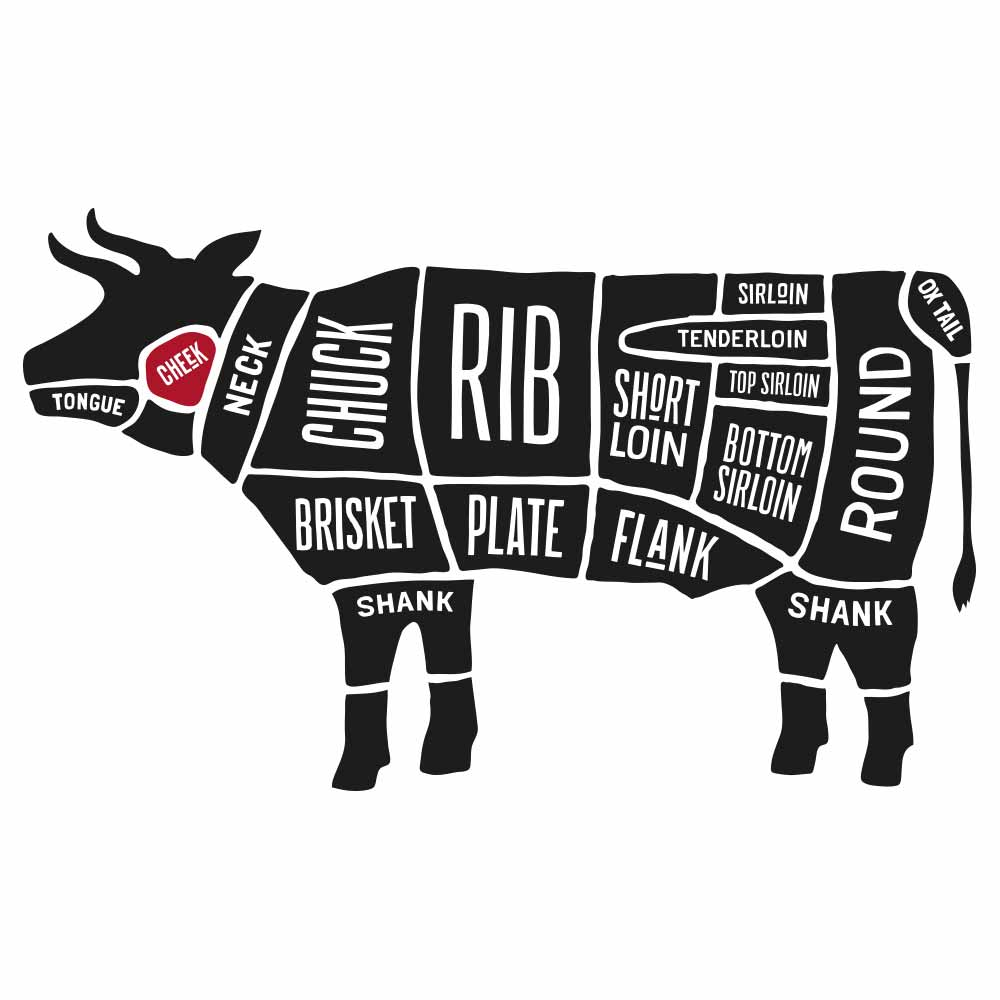
Understanding Beef Cheeks
While it might not sound immediately appealing, this cut of beef is a hidden gem in the cooking world. Unlike more popular cuts, beef cheeks are characterised by their rich, dense texture and profound flavour profile. When cooked correctly, they transform into a melt-in-your-mouth delight that is hard to match and resist!
- Texture: The texture of beef cheeks is completely unique. Due to their location on the cow, these muscles work constantly, which results in a denser, more fibrous structure. However, this very characteristic makes them ideal for slow cooking. The long, gentle cooking process breaks down the tough fibres, rendering the cheeks tender and full of flavour. The result is a cut that offers a perfect balance between meaty texture and succulent softness.
- Flavour: Flavour-wise, beef cheeks are intensely beefy and have a depth that is unparalleled. They have the ability to absorb and enhance the flavours of accompanying ingredients, making them a favourite choice for rich, hearty dishes.
- Quality: Not all meat is created equal. Scotch beef cheeks, in particular, are highly prized for their quality. Scotland's unique climate and natural pastures provide ideal conditions for raising cattle. The cows graze on nutrient-rich grass, which contributes to the development of a superior taste and texture and an ethically and sustainably produced meat that is sought-after by chefs and foodies worldwide.
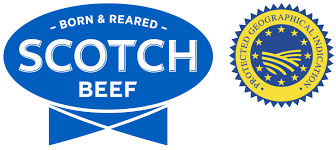
How to Prepare Beef Cheeks
Preparing beef cheeks involves a few key steps to ensure that this tough, fibrous cut of meat becomes tender and flavourful. Here's a quick guide on how to prepare beef cheeks:
✅ Trimming the Meat:
- Beef cheeks often come with a layer of silver skin and some fat. Start by trimming off the silver skin and any large, hard pieces of fat. However, leave some fat for flavour.
- Since the cheeks are a worked muscle, they might have some sinewy bits. Trim these off as well.
✅ Rinsing and Patting Dry:
- Rinse the beef cheeks under cold water to remove any bone fragments or impurities.
- Pat them dry with a paper towel. This helps in achieving a good sear when browning the meat.
✅ Cutting to Size:
- If the beef cheeks are particularly large, you might want to cut them into smaller, more manageable chunks. However, remember that they will shrink considerably during cooking.
✅ Marinating (Optional):
- For added flavour, you can marinate the beef cheeks. Ingredients such as red wine, garlic, herbs, and spices can infuse the meat with extra depths of flavours.
- Marinate for several hours or overnight in the refrigerator for best results.
✅ Browning:
- Before slow cooking, it is recommended to sear the beef cheeks. This step adds depth caramelization for extra flavour.
- Heat oil in a pan over high to medium heat and sear the cheeks on all sides until they are nicely browned. This usually takes a few minutes per side.
✅ Slow Cooking:
- Beef cheeks are best cooked low and slow. This can be done in a slow cooker, a Dutch oven, or a low oven in a cast iron casserole dish.
- They should be cooked in liquid, such as beef stock, red wine, or a combination of both, with added aromatics like onions, carrots, celery, fresh thyme and bay leaf.
- A slow cooker method is best suited for this cut so cook at a low temperature for several hours. The exact time will depend on your chosen cooking method and the size of the beef cheeks, but it will generally take between 3 to 6 hours.
✅ Final Preparations:
- Once cooked, the meat should be extremely tender and almost falling apart.
- Remove the cheeks from the cooking liquid, and if desired, strain the liquid to use as a sauce. The sauce can be thickened with a roux or by reducing it over high heat.
✅ Resting the Meat:
- Let the beef cheeks rest for a few minutes before serving. This allows the juices to redistribute throughout the meat, ensuring it is moist and flavourful.
✅ Serving Suggestions:
- Serve beef cheeks with simple sides such as creamy mashed potatoes and seasonal greens.
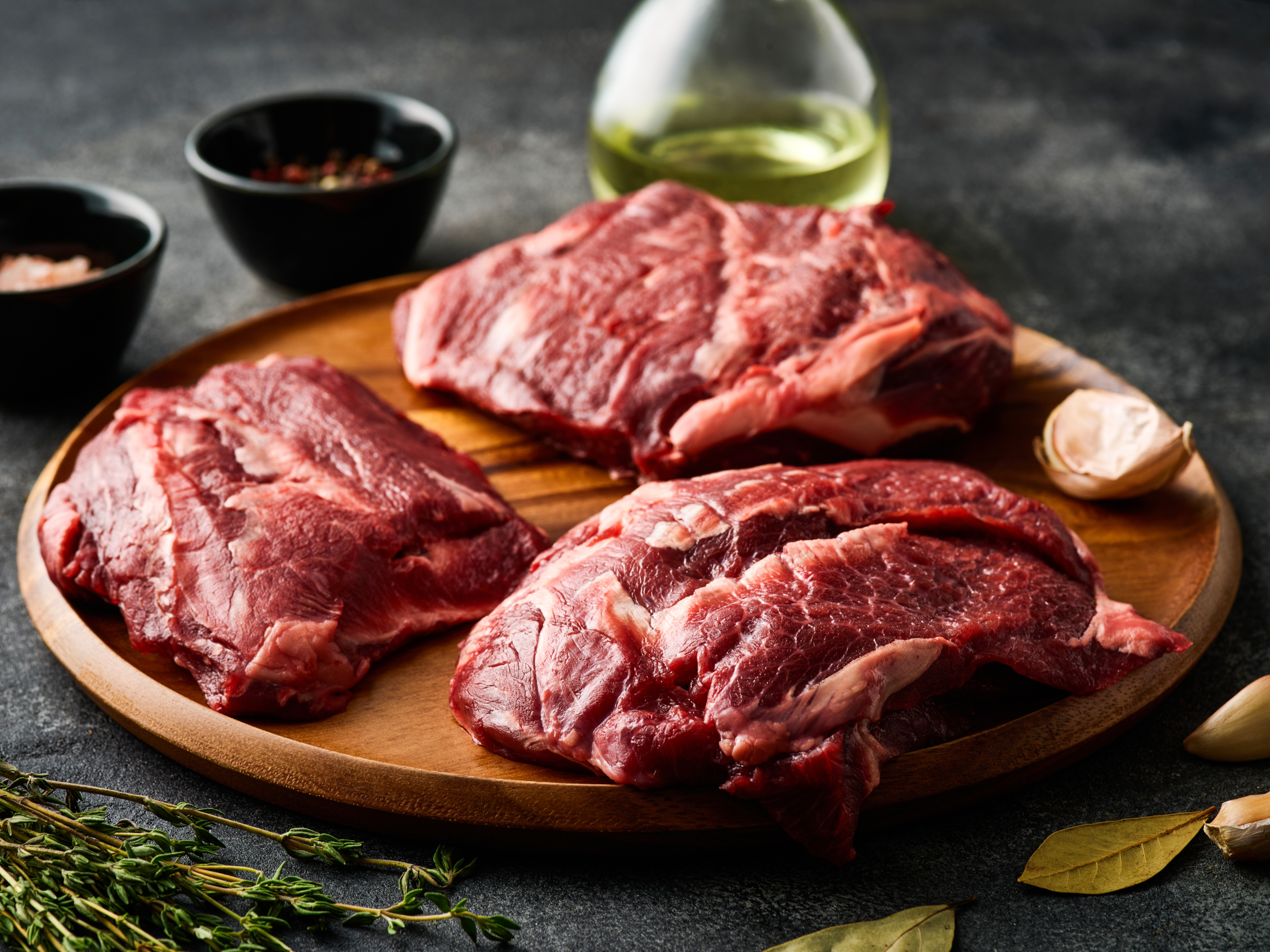
Remember, the key to preparing delicious beef cheeks lies in slow and low-temperature cooking, which transforms this tough cut of meat into a tender masterpiece.
What are Beef Cheeks Best For?
Beef cheeks are best suited for slow-cooked dishes because when cooked slowly, they become exceptionally tender and flavourful. Here are some of the best uses for beef cheeks:
- Braised Beef Cheeks: Braising is perhaps the most popular way to cook beef cheeks. The meat is first seared and then cooked slowly in a liquid (like beef stock or chicken stock, wine, or a combination) along with aromatics and herbs. This results in a rich, flavourful dish where the meat becomes so tender that it can be cut with a spoon.
- Beef Cheek Stew: Incorporating beef cheeks into a stew, where they are cooked with vegetables and herbs, makes for a hearty and comforting dish. The long cooking time allows the flavours to meld beautifully. Serve simply with creamy mashed potato and green beans.
- Beef Cheek Ragu: Slow-cooked beef cheeks can be shredded and used in a ragu sauce, served over pasta. The meat's texture and flavour make for a luxurious and robust sauce.
- Beef Cheek Tacos or Sandwiches: Once cooked and tender, beef cheeks can be shredded and used as a filling for tacos or sandwiches. The meat pairs well with various toppings and sauces, offering a gourmet twist to these classic dishes.
- Smoked Beef Cheeks: For those who enjoy smoking meat, beef cheeks are an excellent choice. When smoked slowly, they absorb the smoky flavours while becoming tender and juicy.
- Slow-Cooked Asian Dishes: Beef cheeks can be used in Asian-style slow-cooked dishes, like Korean braised beef or Chinese red-braised beef, where they are cooked with spices, soy sauce, and other seasonings.

The key to unlocking the potential of beef cheeks is patience. Slow, prolonged cooking breaks down the tough fibres, resulting in a texture that is both tender and rich in flavour. This makes beef cheeks a versatile ingredient that can be the star of a variety of dishes, from elegant main courses to comforting homestyle cooking.
The Versatility of Beef Cheeks Around the World
Beef cheeks are a versatile ingredient used in various cuisines around the world, each bringing out its unique flavours and textures. Here's a list showcasing this versatility:
➡️ Italian Cuisine:
- Beef Cheek Ragu: Slow-cooked beef cheeks are shredded and served with pasta.
- Osso Buco Style Beef Cheeks: Prepared in a similar manner to the classic veal dish, but using beef cheeks instead of veal shanks.
➡️ French Cuisine:
- Beef Bourguignon: Beef cheeks can replace traditional cuts for a richer version of this classic stew.
- Beef Cheek Daube: A Provençal stew where beef cheeks are cooked with wine, herbs, and vegetables.
➡️ Asian Cuisine:
- Chinese Braised Beef Cheeks: Slow-cooked in soy sauce, star anise, and other spices.
- Korean Beef Cheek Stew: A hearty stew with beef cheeks, vegetables, and Korean spices.
➡️ Mexican Cuisine:
- Beef Cheek Tacos (Barbacoa): Slow-cooked with Mexican spices and used as a taco filling.
- Beef Cheek Tamales: Shredded beef cheeks wrapped in masa dough and steamed.
➡️ Spanish Cuisine:
- Carrilladas: Beef cheeks slowly braised in wine, often served with potatoes or rice.
- Beef Cheek with Pedro Ximenez: Cooked with sweet Spanish wine for a unique flavour.
➡️ Argentinian Cuisine:
- Estofado de Mejillas: A traditional stew using beef cheeks, tomatoes, and local herbs.
- Grilled Beef Cheeks: Marinated and grilled, often served with chimichurri sauce.
➡️ Middle Eastern Cuisine:
- Beef Cheek Tagine: Slow-cooked with spices, dried fruits, and nuts in a traditional tagine.
- Beef Cheek Kebabs: Marinated, skewered, and grilled, often served with rice and sauces.
➡️ South African Cuisine:
- Beef Cheek Potjie: A slow-cooked stew made in a cast-iron potjie pot over an open fire.
- Biltong-Flavored Beef Cheeks: Dried and seasoned in the style of biltong.

This list demonstrates how beef cheeks are adapted into various culinary traditions, reflecting the global appreciation for this flavourful and versatile cut of meat.
Why Quality Beef Matters in Cooking
Quality beef, particularly Scotch Beef, plays a crucial role in cooking for several reasons:
- Flavour and Texture: High-quality beef like Scotch Beef is renowned for its superior flavour and texture. The meat from well-raised cattle, feeding on natural pastures, tends to have a more complex and richer taste. The texture is also more tender and juicy, enhancing the overall eating experience.
- Health Benefits: Quality beef is often more nutritious. It tends to have a better balance of fats, including higher levels of omega-3 fatty acids, which are beneficial for health. The meat is also likely to be free from added hormones and unnecessary antibiotics.
- Cooking Performance: Quality beef is more forgiving during cooking and can yield better results even under less-than-ideal cooking conditions. It tends to cook more evenly, retain moisture better, and is less prone to toughening, which is especially important for cuts like beef cheeks that require long cooking times.
- Ethical and Sustainable Farming: By choosing Scotch Beef, you are supporting sustainable farming practices. Scottish farmers are known for their commitment to animal welfare and environmentally friendly farming methods. This not only ensures the quality of the meat but also contributes to the sustainability of the agricultural industry.
- Economic and Community Support: Purchasing Scotch Beef supports local farmers and communities in Scotland. These farmers often come from generations of cattle rearing and have a deep commitment to quality and tradition. By choosing their products, you are contributing to the local economy and helping preserve a way of life.
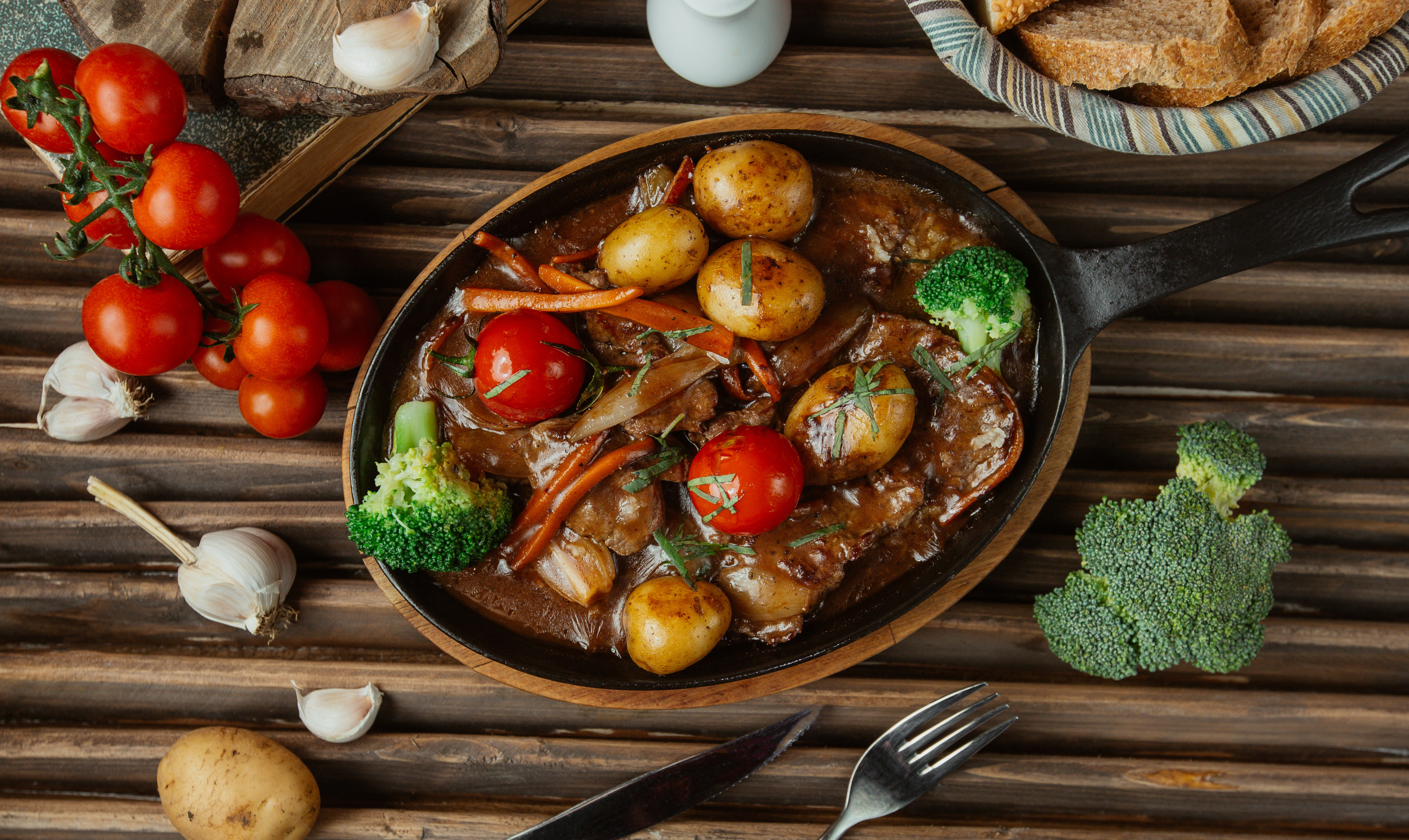
Where Can I Find Scotch Beef Near Me?
If you are looking to find Scotch Beef in your area, you have come to the right place!
Our website offers a user-friendly map where you can enter your postcode to locate the nearest Scotch meat supplier. This tool is incredibly useful for finding local butchers, grocery stores, and suppliers that stock Scotch Beef.
By using these resources, you not only get access to some of the best beef available but also contribute to a larger community and tradition of quality meat production. Whether it is for a special occasion or a weekday family meal, choosing Scotch Beef ensures a high-quality, flavourful, and ethically sourced ingredient for every meal.
What's The Scotch Difference?
Let us take you on a journey into what makes Scotch Beef, Scotch Lamb and Specially Selected Pork so special, and how we produce such high-quality meat renowned and enjoyed worldwide.


- © MakeitScotch 2025
- Cookies
- Privacy
- Terms of Use
Site by Art Department
